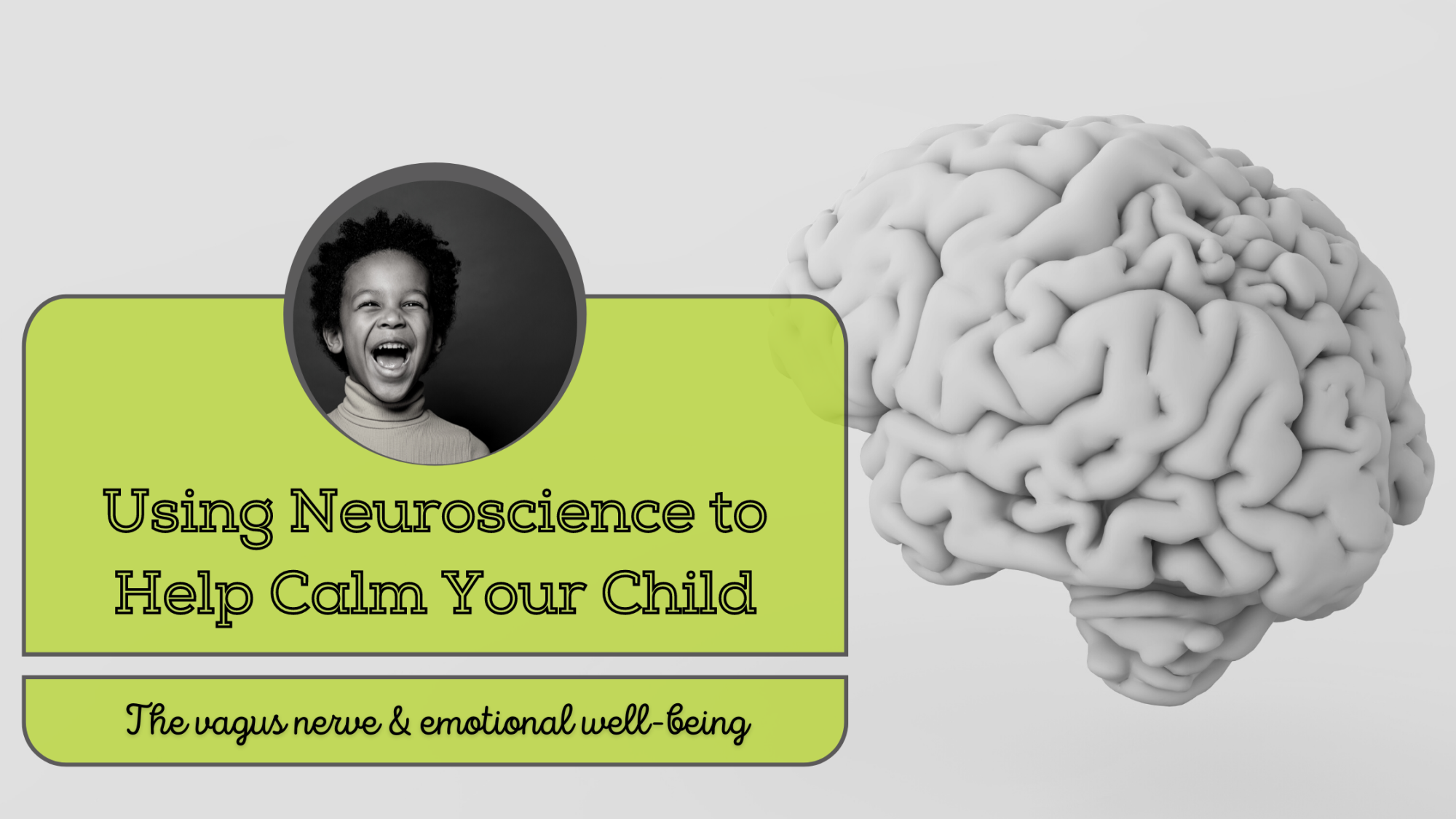The vagus nerve & emotional well-being
If you or your child is a client of mine at Individual and Family Connection, then you know how much of a brain geek I am! I simply don’t know how to talk about emotional regulation without considering what is happening in the brain and body. And I LOVE sharing this neuroscience with the kiddos I work with! In fact, if you follow our instagram account, you can see a play therapy activity where one of my child clients created a playdough representation of the vagus nerve.
Embracing Neuroscience
I know, you’re asking “The what? This already feels too complex.” Neuroscience does not have to be intimidating! And if it helps our kids (and ourselves) better regulate and calm our bodies, then it is definitely worth the study! My goal as a therapist is to teach the children and families I work with about neuroscience in a way that is understandable, digestible, and helpful! So let me start with my most favorite body part…the vagus nerve!
The Vagus Nerve
The vagus nerve (sounds like the city Vegas) is part of our body’s nervous system. These nerves play an important part in our sensory and movement functioning. These are all things that we are not consciously doing: heart rate, digestion, immune system, saliva production, mood, etc. The vagus nerve also plays an important part of our regulatory system and is an essential component in not only the regulation of our bodies, but of our socioemotional functioning too! It does so much and we don’t even have to think about it! Basically, it is a major system in our body intended to make us calm, connected, and regulated.
Fun Fact!
Our vagus nerve is the longest nerve in our body. It starts at the brain and communicates throughout the rest of our body. Have you ever had a “gut feeling” that influenced a decision you had to make? Or where something “just didn’t feel right” so you left the environment? These experiences are not just coincidences, but they are the vagus nerve sending information from our gut to brain, specifically information having to do with our feeling threatened or unsafe. The saying “Trust your gut” truly has some scientific merit to it!
Connecting It All
So what does this have to do with your child’s mood, anxiety, or depression? Well, when your child’s brain has been sent signals via the vagus nerve about feeling threatened, what you may see are the behavioral responses to try to survive (fight, flight, or freeze). Many grownups use reasoning and language to try to calm their child down. But if we look at neuroscience, we know that when kids are in that state of mind, their thinking brain (logic, decision making, understanding cause and effect) is not online. So if our children are not able to access their thinking brain…this is where focusing on the vagus nerve can be a total game changer!
Stimulating your child’s vagus nerve can interrupt the fight, flight, freeze mode and send a signal to the brain that communicates “you are safe” rather than “you are in danger.” A strong vagal tone is directly linked to better emotional regulation and well being. So stimulating our vagus nerve should be an everyday workout, and not just done in the moment! Just like working out our muscles, we can work out our nervous system!
Exercising the Vagus Nerve
So how do we stimulate a nerve?! It is actually super simple! Here are just a FEW ways to exercise that vagus nerve and build a nice strong vagal tone.
- Humming, Singing, and Laughing: The vagus nerve runs along our throat and vocal cords. When we hum and sing we activate it! Ever notice your child hum or sing to themself while doing homework or coloring? They are actually naturally calming and soothing their nervous system!
- Chewing: This has been shown to activate the vagus nerve! Have you ever felt or seen the calming effects of chewing on a stick of gum?
- Meditation and Breathing: Not just any breaths, but deep, slow breaths have been shown to stimulate the vagus nerve. I love teaching kids the 4-7-8 breathing by GoZen.
- Gargle water: This works the same way as humming and singing!
- Cold Exposure: Cold slows our bodies down. The nerve responsible for slowing us down is…the vagus! Even just splashing cold water on our face can help activate our vagus nerve. Teens and adults can try short periods of cold showers for a more intense exercise!
Congrats! You now know how to use neuroscience to help calm your child! Try it out for yourself too! You may just find these exercises make a huge impact on your day to day! If you are looking for more resources on the vagus nerve, check out this super cool self help book: Accessing the Healing Power of the Vagus Nerve: Self-Help Exercises for Anxiety, Depression, Trauma, and Autism: by Stanley Rosenberg (Author), BENJAMIN SHIELD (Foreword), Stephen W. Porges (Foreword).
Author Biography
Ritamaria is a Licensed Clinical Professional Counselor and Certified Theraplay Therapist, Trainer, and Supervisor. She has spent her professional career as a pediatric therapist, clinical supervisor, and clinical director of Individual and Family Connection. Ritamaria lives in Oak Park with her husband and daughters, ages 7 and 2.
References
Fallis, Jordan: “How to stimulate your vagus nerve for better mental health”, December 24, 2021, https://www.optimallivingdynamics.com/blog/how-to-stimulate-your-vagus-nerve-for-better-mental-health-brain-vns-ways-treatment-activate-natural-foods-depression-anxiety-stress-heart-rate-variability-yoga-massage-vagal-tone-dysfunction, Accessed May 1, 2022.
Field, T., & Diego, M. (2008). Vagal activity, early growth and emotional development. Infant behavior & development, 31(3), 361–373. https://doi.org/10.1016/j.infbeh.2007.12.008
Howland R. H. (2014). Vagus Nerve Stimulation. Current behavioral neuroscience reports, 1(2), 64–73. https://doi.org/10.1007/s40473-014-0010-5
Mäkinen, T. M., Mäntysaari, M., Pääkkönen, T., Jokelainen, J., Palinkas, L. A., Hassi, J., Leppäluoto, J., Tahvanainen, K., & Rintamäki, H. (2008). Autonomic nervous function during whole-body cold exposure before and after cold acclimation. Aviation, space, and environmental medicine, 79(9), 875–882. https://doi.org/10.3357/asem.2235.2008
Navin Leanage (2020). The vagus nerve (CN X).
teachmeanatomy.info/head/cranial-nerves/vagus-nerve-cn-x/

